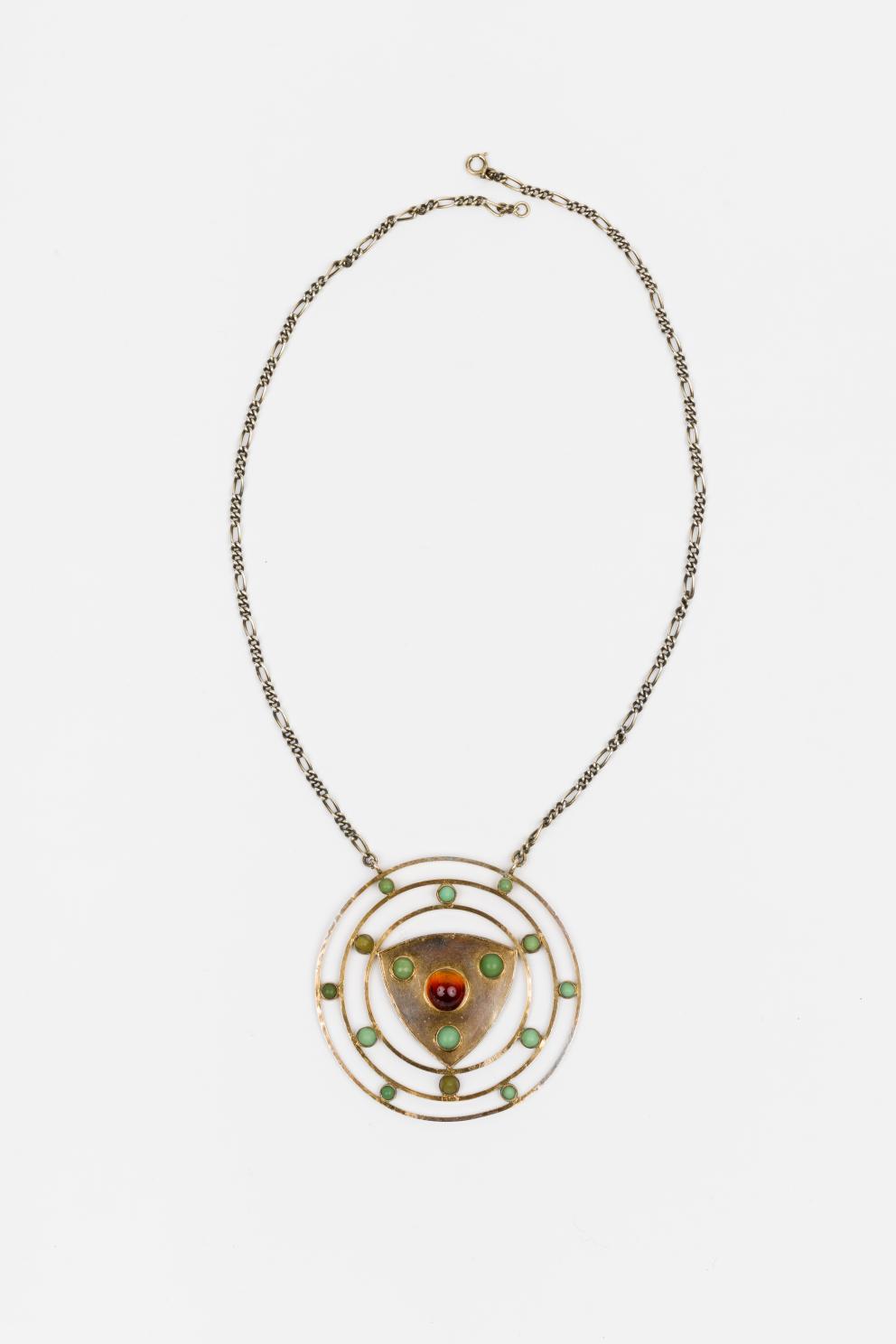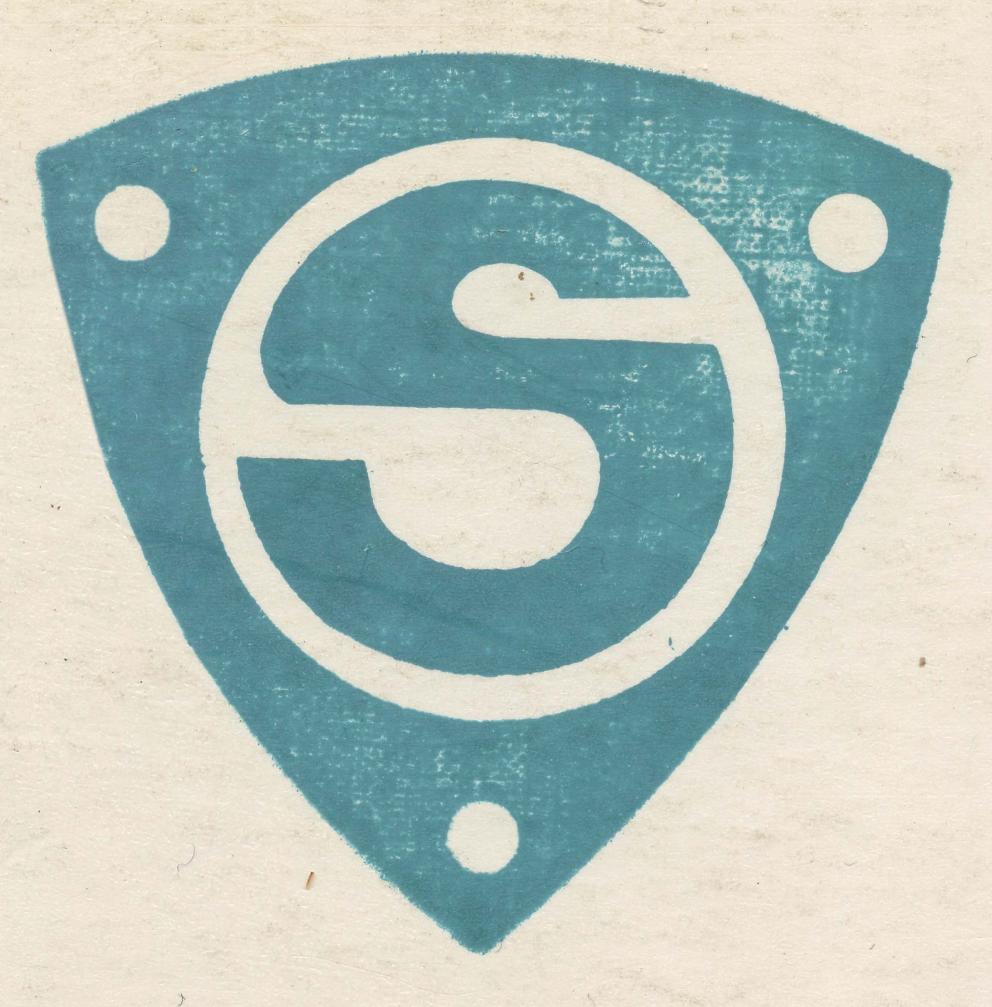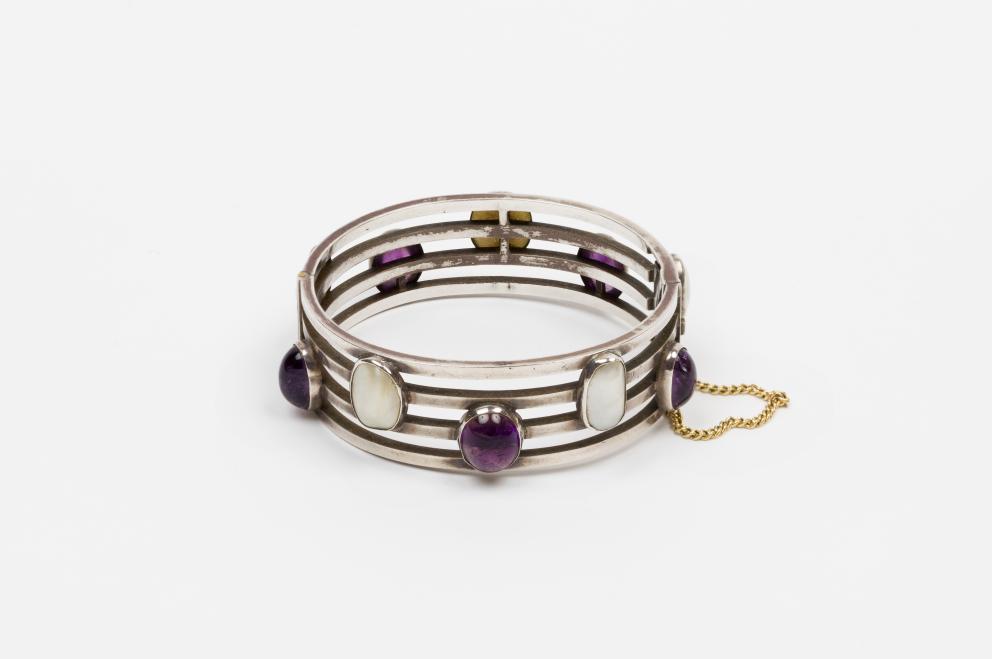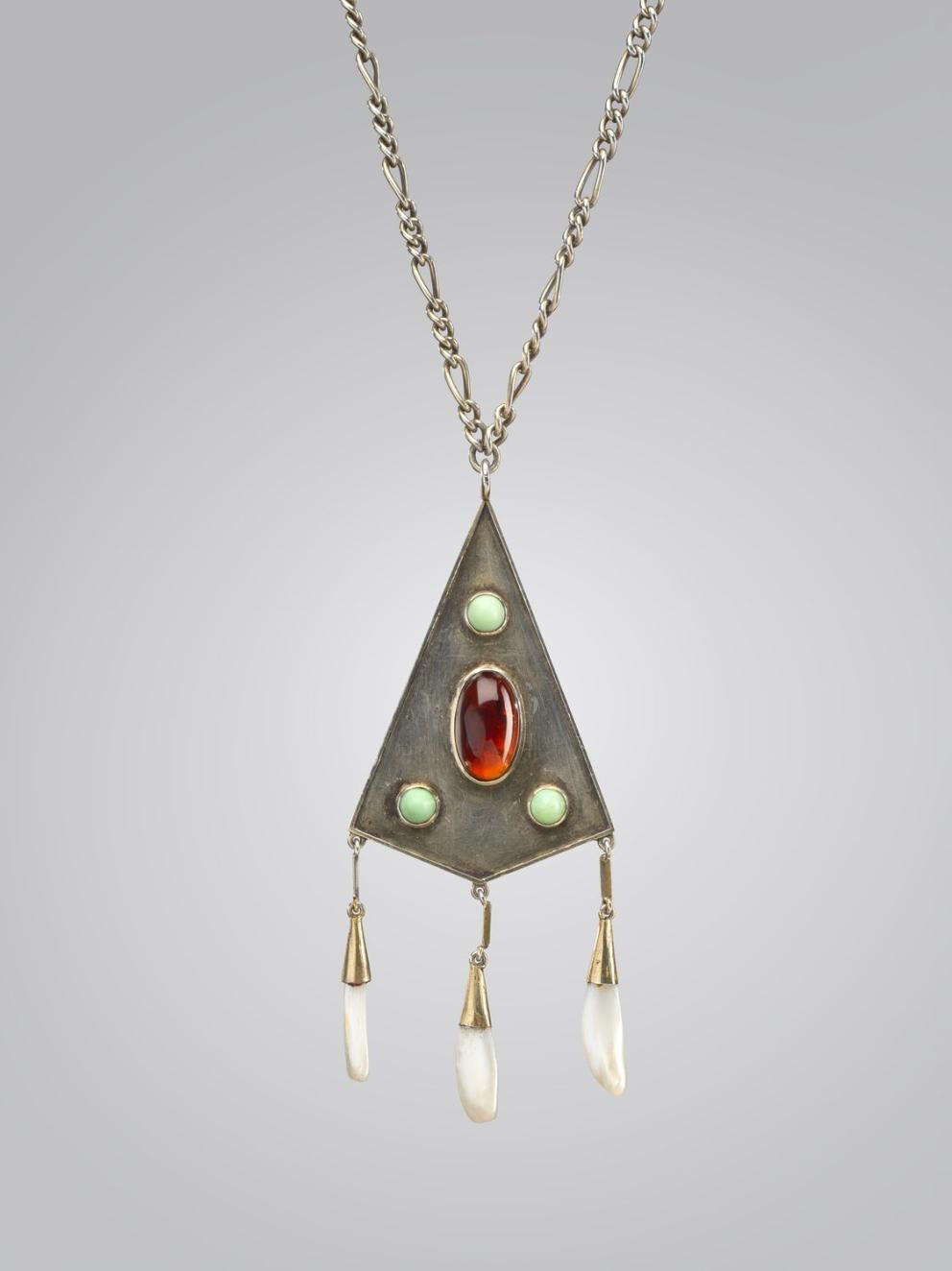Pendant by Gustave Serrurier-Bovy
Around 1905, Serrurier & Compagnie began creating jewelry, using processes like those used for their furniture and decorations: inexpensive materials, economical methods of production and meticulous detailing to create an optimal decorative effect. The pendant on display in our temporary exhibition is made from silver covered in gold (vermeil) and adorned with semi-precious stones. The fine baguettes that structure the jewelry are reminiscent of the lines of a musical score, supporting the decorative elements. Here, Serrurier-Bovy faithfully applied the principles of architect and theorist Viollet-le-Duc, who believed that ornament should be derived from function.
At the center of the pendant is a triangle with curved sides, known as the Reuleaux triangle. This geometric shape, used since the 13th century in architecture, was theorized in the 19th century by the German engineer who made it a symbol of mechanical production. Serrurier-Bovy chose this triangle as the symbol for his company Serrurier & Compagnie, underlining the importance of mechanical processes in his work as an architect.
A dozen similar pieces of jewelry were created, but it seems that they were only worn by members of the architect's family, notably his wife, Marie Bovy, and his daughter. As with Horta and van de Velde, these jewels were never commercialized or mass-produced, remaining intimate and exclusive creations.
The exhibition Belgian Art Nouveau also shows a bracelet.
The Royal Art and History Museum shows a pendant, recently obtained through the Fondation Roi Baudouin. Also, the Musée d’Orsay (Paris) shows two other works: a pendant and a pearl pendant.
EXHIBITION
Belgian Art Nouveau. Until January 5th 2025
Reserve your tickets






